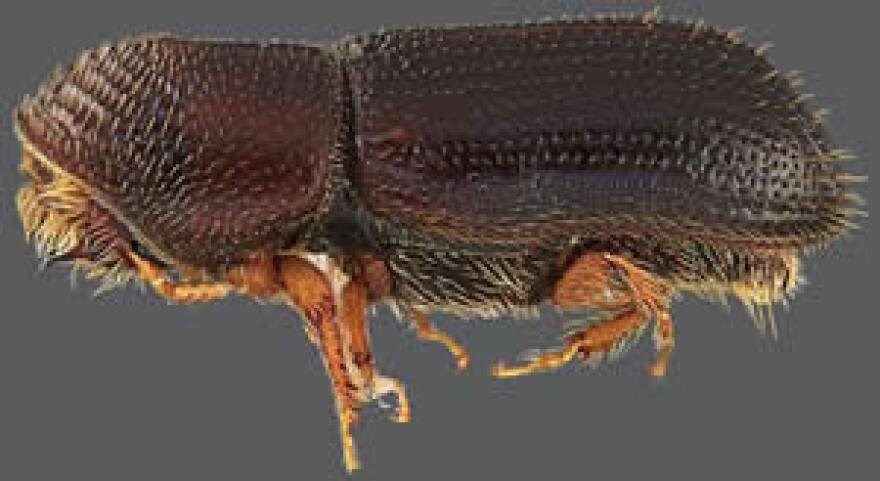Anyone who had to pay a lot of money to cut down dead ash trees in their yard remembers a pest called the emerald ash borer. In our region we’ve had a lot of pests and diseases that kill trees, and now experts have their eye on a disease that kills black walnut trees. This disease is called Thousand Cankers Disease and it’s caused by a fungus. The fungus is carted around by a bug called the walnut twig beetle.

You might have a black walnut tree in your yard. The lumber is beautiful and the trees are also important to people who grow them for the nut.
Michael Dority is the president of the Michigan Nut Growers Association. It’s a group of nut and fruit enthusiasts, ranging from backyard growers to small commercial scale producers.
“The major concern is that it can cause complete die-off of the tree if it gets into the tree. We know that it (the beetle) is in the eastern range, so it has shown up in Tennessee and it is on the move. Right now, it is in Ohio; we have seen it in Pennsylvania as well, and so we see it right beyond our horizon. It is coming,” he says.
The beetle is native to the western U.S. and the disease has been killing black walnut trees in western states, and more recently, in Tennessee. Dority says we don’t know that the disease has been found in Ohio and Pennsylvania yet, but it's likely.
“The fungus has been closely associated with the beetle, so it is a fair assumption that the disease is coming with it.”
So far, he says, there haven't been any signs of the beetle in Michigan. A few years ago, the Michigan Department of Agriculture issued a quarantineto try to keep infested firewood and infested live trees out of the state.
Early surveillance
If you want to keep an eye on your walnut trees, Dority says you have to look closely.
"It'll essentially strangle the tree, and the tree will die."
"You’d have to be starting by looking at the twigs – the beetle causes very small holes. It’ll just riddle the branches with holes. The tree might be able to put up with that, but if it carries the fungus as well, it’ll essentially strangle the tree, and the tree will die. So you would see a sudden collapse of the tree.”
Researchers at Purdue University are working as fast as they can to find out what attracts and repels the twig beetle – and they’ve found that the hybrid of the black walnut and the Carpathian walnut is somewhat repellent to the beetle.
Michael Dority is helping them out by trying to find these hybrid trees.
“The hybrids are very rare. The likelihood of you walking through the woods and finding a hybrid is almost nil. But if you have one in your yard, you probably ordered it or whoever owned the property before you probably ordered it from a nursery,” he says.
Got a hybrid?
If you think you might have a hybrid of the black walnut and Carpathian walnut, the Michigan Nut Growers Association wants to hear from you. Dority says you can email him (dority.michael@gmail.com)and explain why you believe you have a hybrid. He can confirm whether it's a hybrid by looking at the nut.
Dority says he's hoping these hybrid trees will help researchers develop a way to fend off Thousand Cankers Disease.
“We’ve already seen invasives come in and destroy so many species already. We’ve seen the ash tree go, we’ve see the chestnut go, we’ve seen the American elm go as well. We don’t want to see the black walnut go down this same path.”







